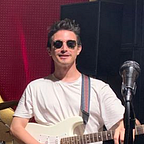What is Max Pooling and Why Do We Need Max Pooling?
If you’ve ever ventured into the world of Convolutional Neural Networks (CNNs), you’ve probably encountered the term “Max Pooling.” It’s a crucial component of CNNs, and in this article, we’ll unravel what Max Pooling is and why it’s indispensable in the realm of computer vision.
What is Max Pooling?
Max Pooling, in the context of CNNs, is like the magic wand that helps these networks understand images better. It’s a technique used for down-sampling, which means reducing the size of an image or a feature map. But how does it work its magic?
How Max Pooling Works
Imagine you have an image divided into smaller sections, often referred to as grids or filters. Max Pooling operates on each of these sections separately. Here’s how it works:
- Scanning: Max Pooling moves a small window (usually 2x2 or 3x3) across the input feature map.
- Selection: In each window, Max Pooling selects the maximum value. It’s like picking the most important piece of information in that area.
- Down-sampling: After selecting the maximum values from all these windows, Max Pooling reduces the size of the feature map. The image becomes smaller, but the essential details remain intact.
Why Do We Need Max Pooling?
Now, you might be wondering, “Why do we even need this Max Pooling thing?” Well, here are some compelling reasons:
- Dimension Reduction: Imagine working with high-resolution images. They are computationally expensive. Max Pooling helps reduce the image size, making it more manageable for the neural network, which speeds up training and requires less memory.
- Invariant to Small Changes: Max Pooling ensures that even if an object in an image is slightly shifted or rotated, the network can still recognize it. It’s like telling the network not to sweat the small stuff.
- Feature Selection: By selecting the maximum values in each window, Max Pooling retains the most essential features while discarding less relevant information. This is crucial for efficient and accurate learning.
- Increased Receptive Field: Max Pooling helps the network see the bigger picture. Summarizing information in larger regions enables the network to capture more significant spatial patterns.
